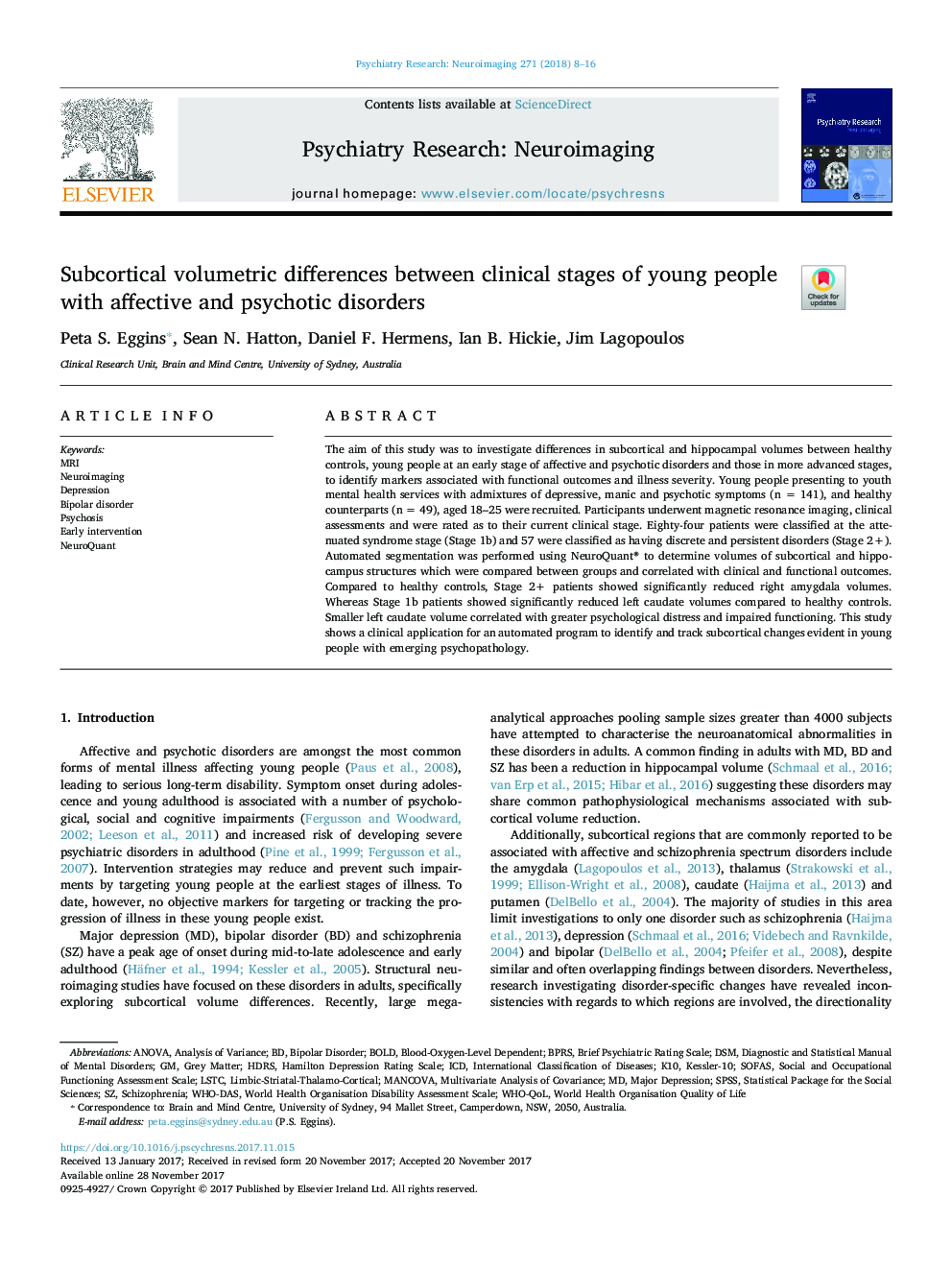| Article ID | Journal | Published Year | Pages | File Type |
|---|---|---|---|---|
| 6817025 | Psychiatry Research: Neuroimaging | 2018 | 9 Pages |
Abstract
The aim of this study was to investigate differences in subcortical and hippocampal volumes between healthy controls, young people at an early stage of affective and psychotic disorders and those in more advanced stages, to identify markers associated with functional outcomes and illness severity. Young people presenting to youth mental health services with admixtures of depressive, manic and psychotic symptoms (n = 141), and healthy counterparts (n = 49), aged 18-25 were recruited. Participants underwent magnetic resonance imaging, clinical assessments and were rated as to their current clinical stage. Eighty-four patients were classified at the attenuated syndrome stage (Stage 1b) and 57 were classified as having discrete and persistent disorders (Stage 2+). Automated segmentation was performed using NeuroQuant® to determine volumes of subcortical and hippocampus structures which were compared between groups and correlated with clinical and functional outcomes. Compared to healthy controls, Stage 2+ patients showed significantly reduced right amygdala volumes. Whereas Stage 1b patients showed significantly reduced left caudate volumes compared to healthy controls. Smaller left caudate volume correlated with greater psychological distress and impaired functioning. This study shows a clinical application for an automated program to identify and track subcortical changes evident in young people with emerging psychopathology.
Keywords
LSTCSOFASK10BPRSDSMMANCOVAHDRSSPSSBOLDbipolar disorderSchizophreniaDepressionMajor depressionMRIStatistical Package for the Social SciencesMultivariate analysis of covarianceanalysis of varianceANOVANeuroimagingICDDiagnostic and Statistical Manual of Mental DisordersPsychosisInternational Classification of Diseasesgrey matterEarly interventionSocial and Occupational Functioning Assessment ScaleHamilton Depression Rating ScaleBrief Psychiatric Rating Scaleblood-oxygen-level dependent
Related Topics
Life Sciences
Neuroscience
Biological Psychiatry
Authors
Peta S. Eggins, Sean N. Hatton, Daniel F. Hermens, Ian B. Hickie, Jim Lagopoulos,
